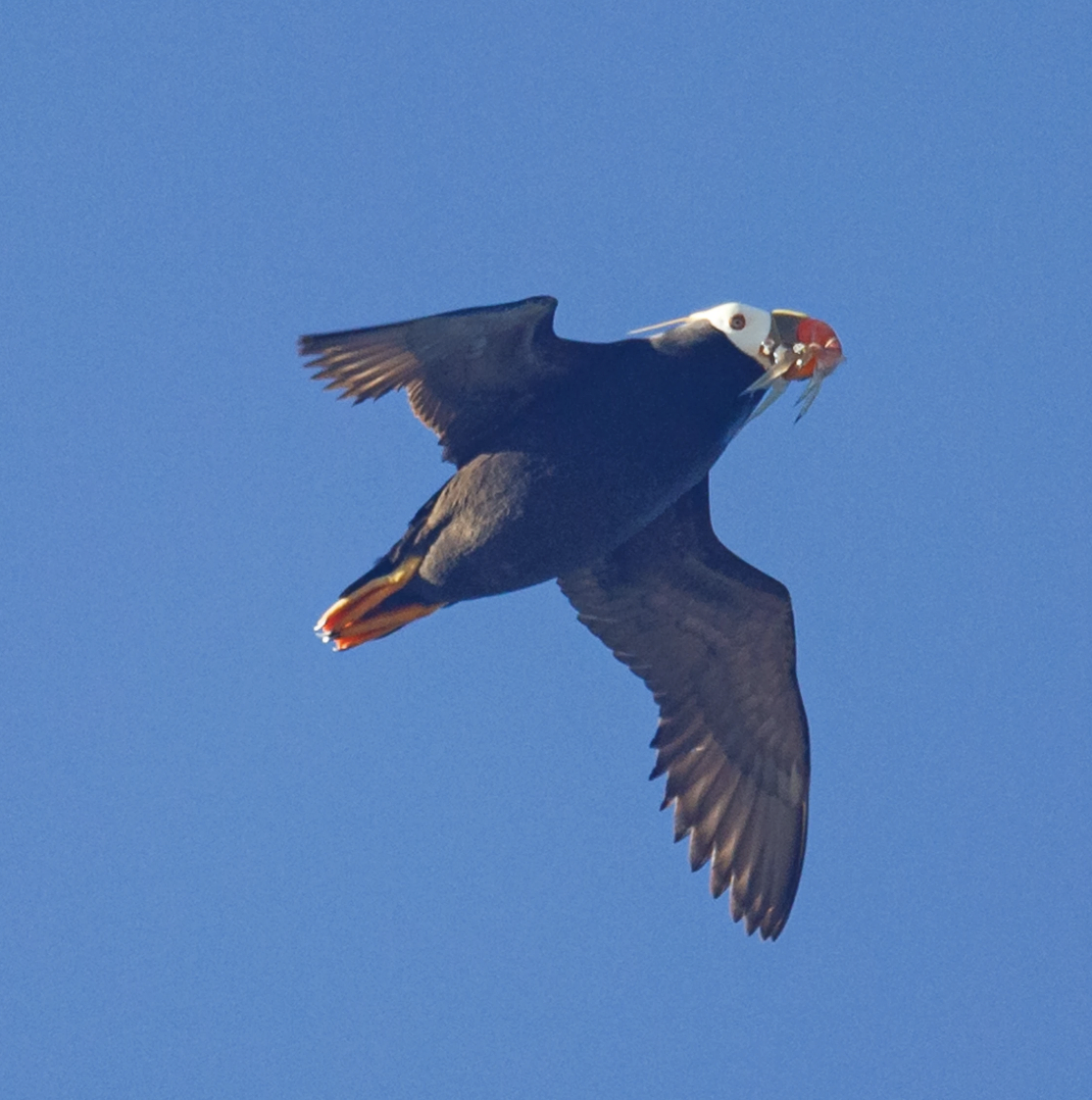Field Notes: Puffin Research
Originally published August 16, 2021
Noah Dolianjec has spent this summer at Haystack Rock in Cannon Beach, Oregon conducting field research on tufted puffins. He has provided us with some of his field notes so we can see what he's been up to. Check out some of the highlights below!
"I feel exceptionally lucky that I have been able to live and work in one of the most beautiful places in the world. This community and these birds have welcomed me with an open heart!"
"On a perfect day for field work we were able to disembark the USFWS research vessel (by embodying James Bond and jumping off the bow into a bed of mussels). As we climbed the steep slope of Hunter's Island we identified what might have been a tufted puffin burrow in the past. Of course, the opportunity to put my arm into a dark, mysterious burrow where I wasn't sure what I would find was... a dream come true! We didn't find any chicks this time but there are more islands to check!"
"Me and Alyssa Nelson (USFWS Intern) climb Hunter's Island on the south coast near Gold Beach to do some burrow checks for tufted puffin chicks!"
"Call me crazy but I was so excited to put my arm into a dark and mysterious burrow that might have a snapping bill at the end of it! We were checking a series of burrows for tufted puffin chicks, feathers or poop samples! We didn't find any tufted puffin feathers but we did collect some storm petrel feathers. While it looks like the hill wasn't that steep we were essentially rock climbing our way up in waders and rain boots! It was quite the journey."
"A pelagic cormorant exudes royalty atop Haystack Rock's satellite rock. Pelagic cormorants are one of many birds that use these rocks as their spring and summer nesting grounds."
"Birders have four letter codes to identify the different species. Tufted puffins are known as TUPU... or TUpoo?"
"After a rough morning on the water where we counted a big colony of tufted puffins near Port Orford, the crew takes a break while we fuel up at the Port of Gold Beach."
"As elegant as this tufted puffin looks while approaching its burrow for landing, these birds are not known for their grace in flight."
"In 2020 I got to work with Oregon State University's Marine Mammal Institute on the gray whale foraging project in Port Orford. One thing that I loved about it was that each whale had a unique name and could be identified at the individual level.
Tufted puffins aren't quite as easy of a species to do that with but once you get used to their burrow locations you can often identify them that way. This bird here won my heart this summer. Named Cliff, after its risky burrow placement on the edge of a sheer dropoff, Cliff has quite the personality. You can see here that Cliff is interested to see what his neighbor is doing!"
"Honey! Get the baby ready, dinner is almost served!"
"On gloomy days it never fails that having the scope out and seeing my summer time seabird friends, the Haystack Rock tufted puffins, always cheers me up."
"This sticker sits in the corner panel of a small Cannon Beach business's door. While obviously designed to deter smoking, the sticker tells a subtle and subconscious story: if we keep up our bad habits there will be no more puffins to save."
"The common murres carry a single fish at a time back to the rock. Before landing, many of them enjoy a healthy parade over the shore to show off their latest meal."
"The perspective of the Oregon coast from the surface of the nearshore Oregon waters is hard to explain. Our coastline is simply unparalleled. In this photo we are surveying the sheer side of Cape Lookout."














